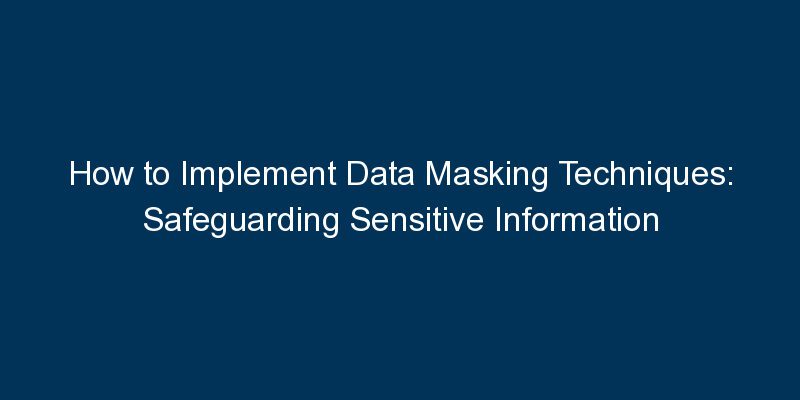Data masking is a crucial technique for safeguarding sensitive information in non-production environments. This blog provides a comprehensive guide on how to implement data masking techniques, ensuring that sensitive data remains protected during development, testing, and analytics processes.
Introduction:
Data masking, also known as data obfuscation or anonymization, involves replacing, encrypting, or scrambling sensitive information to protect it from unauthorized access. This guide explores the key steps in implementing data masking techniques to enhance data security in non-production environments.
Key Steps to Implement Data Masking Techniques:
- Identify Sensitive Data Elements: Conduct a thorough assessment to identify sensitive data elements within your databases. This includes personally identifiable information (PII), financial data, and any other information subject to privacy regulations.
- Define Masking Policies: Clearly define data masking policies based on the sensitivity of the identified data elements. Determine the level of obfuscation required for different types of data to comply with security and privacy requirements.
- Select Appropriate Masking Techniques: Choose appropriate data masking techniques based on your masking policies. Techniques include substitution, shuffling, encryption, and tokenization. The choice depends on the nature of the data and the desired level of protection.
- Integration with Development and Testing Processes: Integrate data masking into your development and testing processes seamlessly. Ensure that masked data is used in non-production environments to prevent exposure of sensitive information during testing and development activities.
- Maintain Consistency with Production Data: Strive to maintain consistency between masked non-production data and the original production data. This ensures that testing scenarios accurately represent real-world conditions without compromising data security.
- Regular Audits and Monitoring: Conduct regular audits and monitoring of data masking processes. Ensure that masked data remains secure and that any changes in data structures or sensitivity are promptly addressed.
Conclusion:
Implementing data masking techniques is crucial for organizations handling sensitive information in non-production environments. By following the steps outlined in this guide, businesses can enhance data security, comply with privacy regulations, and mitigate the risk of unauthorized access to sensitive data.






















Comments